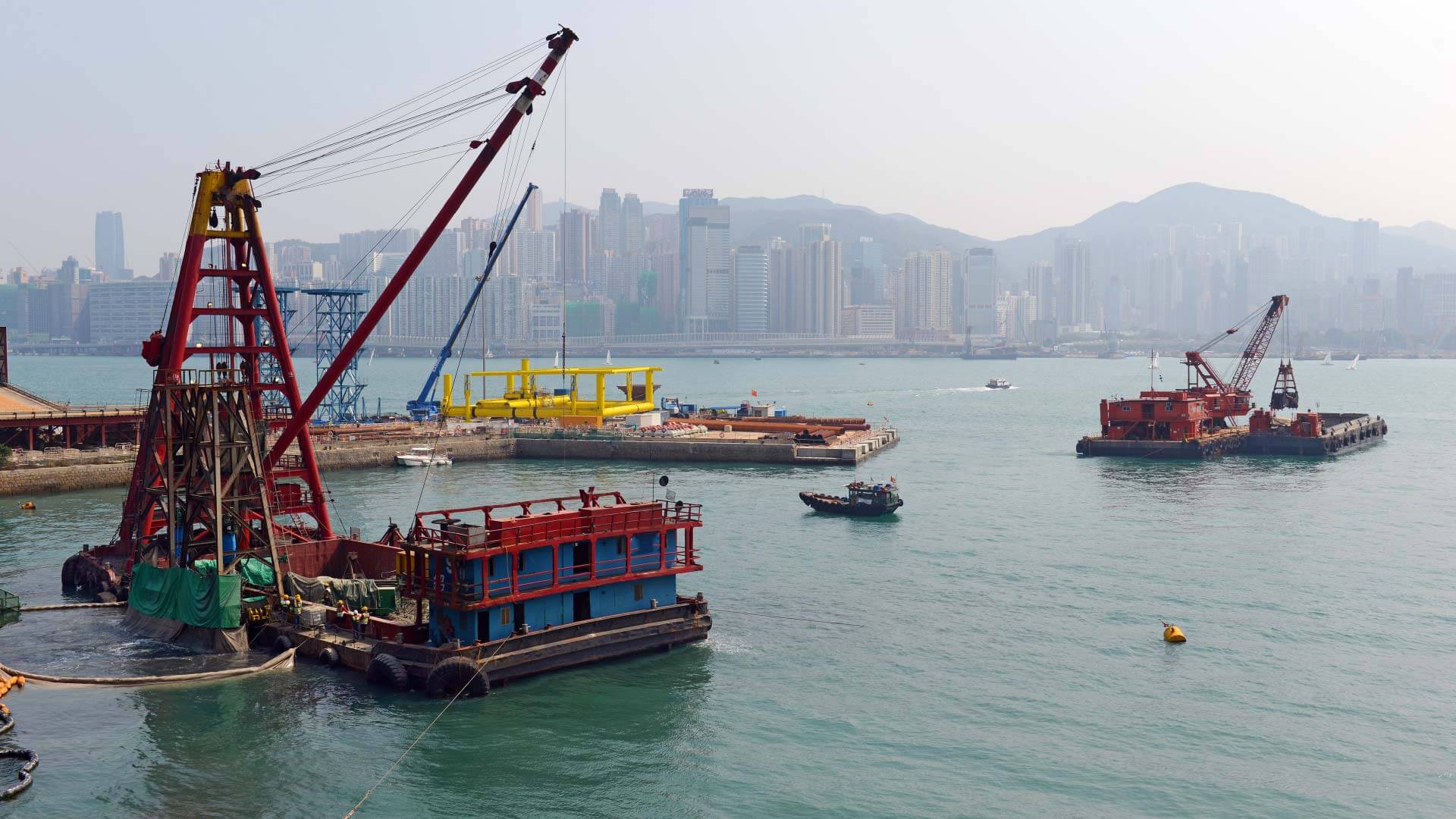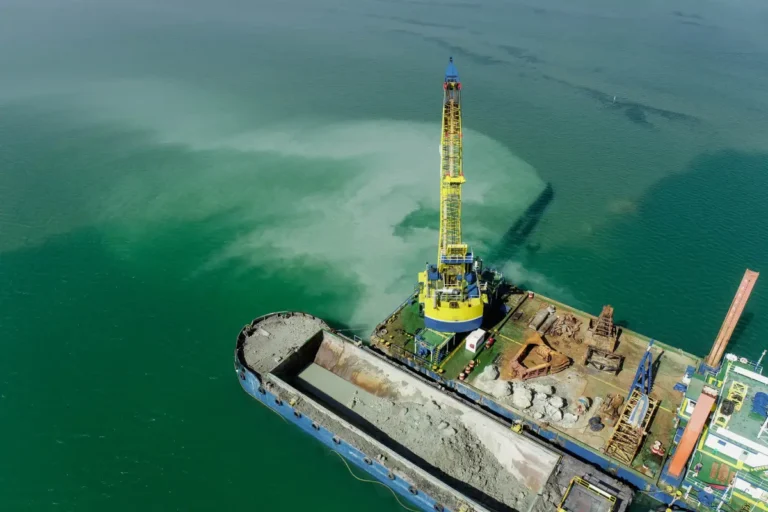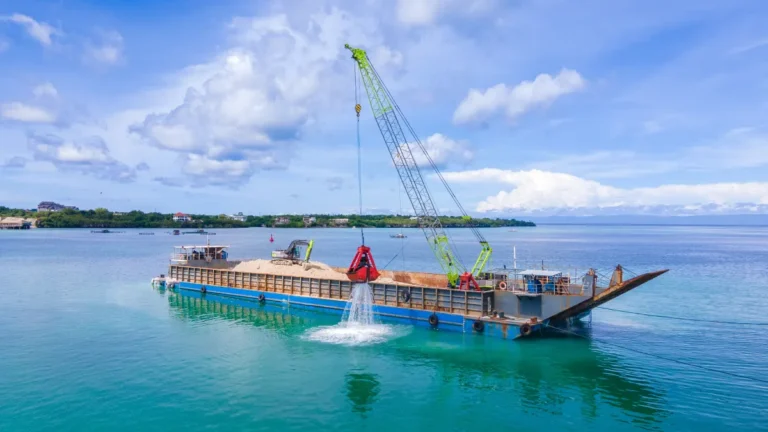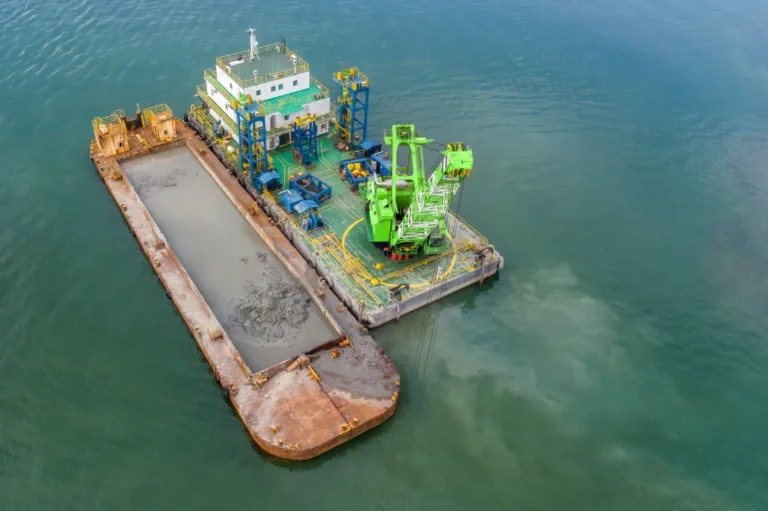Environmental compliance is critical to dredging operations, ensuring that projects are conducted responsibly while minimizing ecological disruption. Dredging contractors play a key role in maintaining navigable waterways, restoring shorelines, and supporting infrastructure development. So, adhering to strict environmental regulations is essential to protecting aquatic ecosystems and maintaining water quality.
Businesses and municipalities searching for dredging contractors near me must select professionals who understand and implement sustainable dredging practices. Compliance with federal, state, and local environmental guidelines ensures the success of dredging projects and helps avoid costly fines, project delays, and reputational damage.
A reputable dredging contractor follows best practices to mitigate environmental impact, such as using advanced sediment management techniques, monitoring water quality, and reducing emissions. By adopting eco-friendly dredging solutions and staying current with evolving regulations, dredging contractors contribute to long-term environmental sustainability while efficiently meeting project goals.
In this guide, we will explore the key regulations governing the dredging industry, common environmental concerns, and the best practices that responsible dredging contractors follow to ensure compliance and minimize ecological disruption. Whether you are looking for dredging contractors near me or seeking insights into sustainable dredging, this resource will provide valuable information to navigate environmental compliance effectively.
Understanding Environmental Regulations for Dredging Contractors
Dredging operations are subject to strict environmental regulations designed to protect water quality, marine ecosystems, and coastal habitats. Dredging contractors must navigate a complex regulatory landscape and ensure compliance with federal, state, and local laws. Failure to meet these requirements can result in project delays, hefty fines, and environmental damage.
Key Regulatory Bodies Governing Dredging Operations
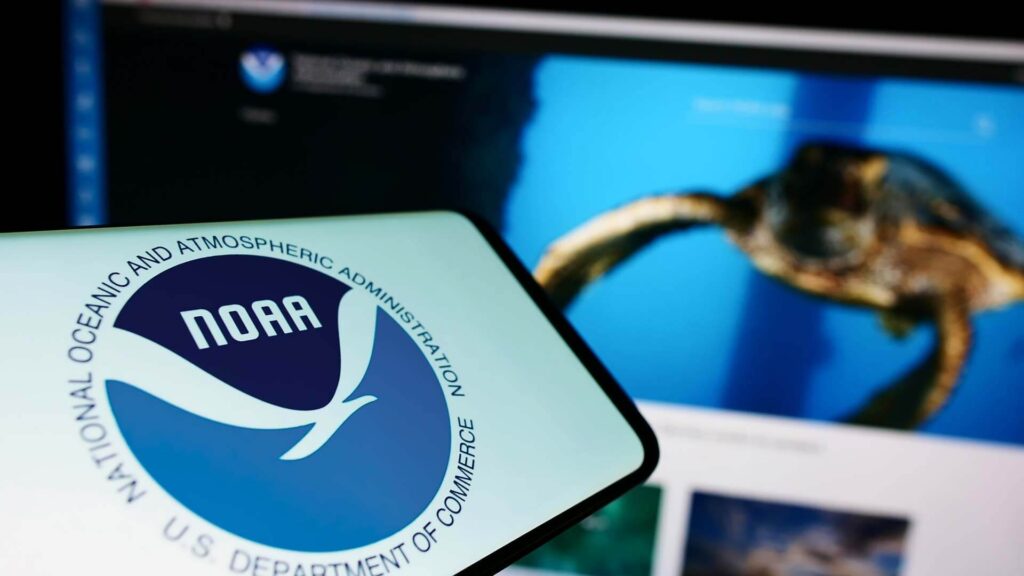
Several agencies oversee dredging activities in the U.S., setting guidelines that dredging contractors must follow:
- Environmental Protection Agency (EPA) – Enforces the Clean Water Act (CWA) and monitors dredged material disposal to prevent pollution.
- U.S. Army Corps of Engineers (USACE) – Regulates dredging permits, including Section 404 permits for discharge of dredged materials into U.S. waters.
- The National Oceanic and Atmospheric Administration (NOAA) protects marine habitats and enforces regulations on dredging activities that affect coastal areas.
- State and Local Environmental Agencies – Implement additional regulations and permitting requirements specific to each region.
Businesses or municipalities searching for dredging contractors near me should ensure that the contractor has experience working within these regulatory frameworks.
Federal and State-Level Dredging Regulations

Dredging projects must comply with several key federal laws, including:
- Clean Water Act (CWA) – Governs the discharge of dredged material into water bodies, requiring permits from the EPA and USACE.
- Coastal Zone Management Act (CZMA) – Ensures that dredging activities align with state coastal management plans.
- Rivers and Harbors Act – Regulates any obstruction or alteration of navigable waters.
- Endangered Species Act (ESA) – Protects marine life that dredging operations could impact.
In addition to federal laws, each state has its dredging regulations, often requiring additional permits and environmental impact assessments. Before starting any project, a dredging contractor must verify compliance with state-specific requirements to avoid potential legal complications.
Common Environmental Permits for Dredging Projects
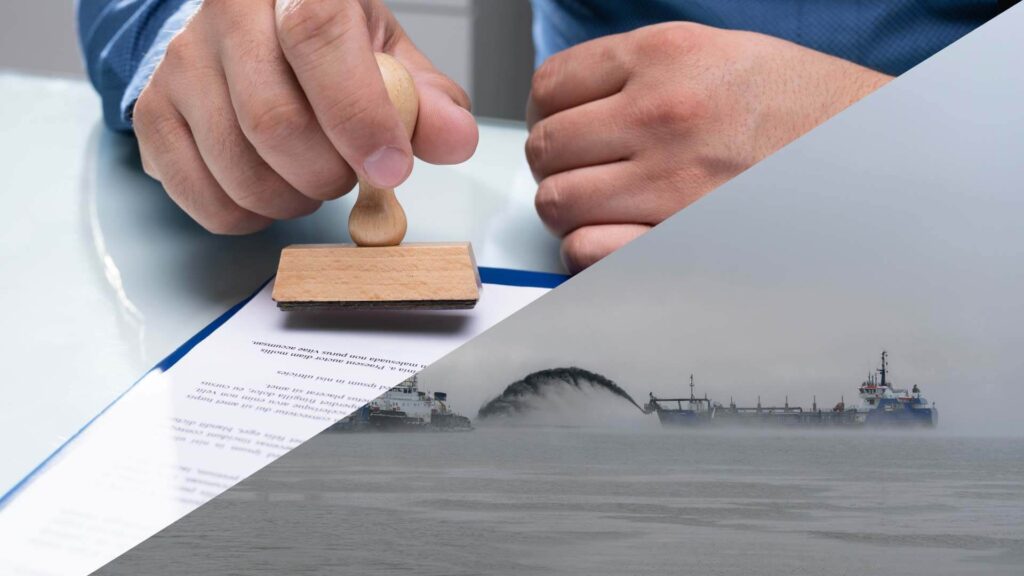
Before beginning any dredging operation, dredging contractors must obtain the necessary permits. The most common permits include:
- Section 404 Permit (Clean Water Act) – Required for dredged material discharge into U.S. waters.
- Section 10 Permit (Rivers and Harbors Act) – Mandates approval for dredging in navigable waters.
- National Pollutant Discharge Elimination System (NPDES) Permit – Regulates water discharge from dredging activities.
- State-Specific Water Quality Certifications – Additional requirements to ensure local environmental standards are met.
For companies looking for dredging contractors near me, confirming that a contractor holds the necessary permits is a crucial step in selecting a reliable and compliant service provider.
Challenges in Maintaining Compliance
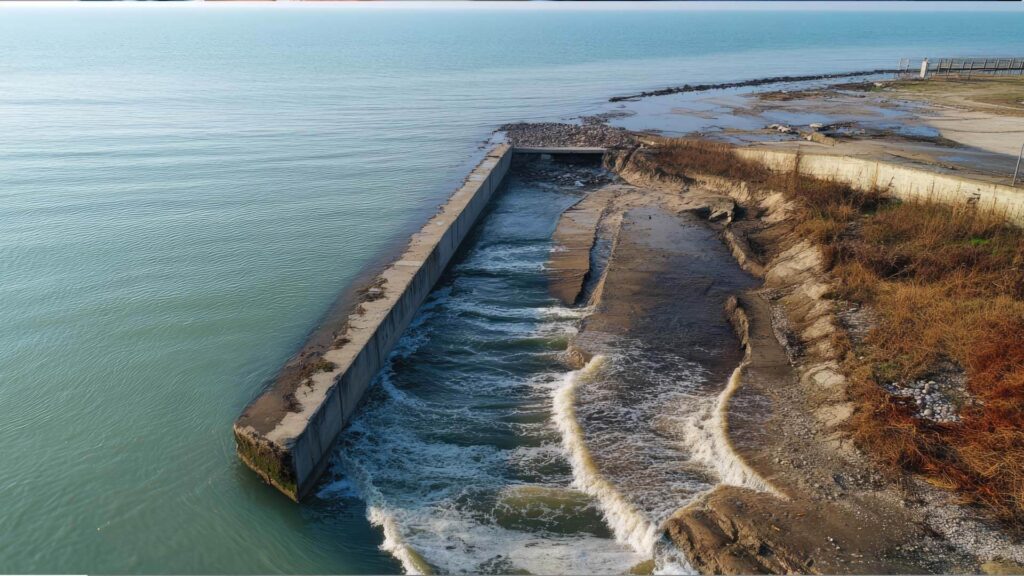
Navigating environmental regulations presents several challenges for dredging contractors, including:
- Changing Regulations – Laws governing dredging operations frequently evolve, requiring contractors to stay informed and adapt accordingly.
- Complex Permit Processes – Securing permits can be time-consuming and may delay project timelines.
- Environmental Restrictions – Seasonal limitations and protected species considerations can impact dredging schedules.
- Sediment Management – Properly handling contaminated or hazardous dredged materials requires specialized techniques and additional compliance measures.
To successfully navigate these challenges, a dredging contractor must have in-depth knowledge of regulatory requirements and implement proactive compliance strategies.
Key Environmental Concerns in Dredging Operations
Dredging is essential for maintaining waterways, supporting infrastructure, and restoring shorelines, but it comes with environmental challenges that dredging contractors must carefully manage. From protecting water quality to minimizing air and noise pollution, compliance with environmental regulations is crucial for reducing ecological impact. Businesses and municipalities searching for dredging contractors near me should consider providers who prioritize sustainable practices and environmental responsibility.
Water Quality Protection and Sediment Management
One of the biggest concerns in dredging projects is the impact on water quality. Improper dredging techniques can lead to excessive turbidity, increased sediment resuspension, and the release of contaminants into surrounding waters. Dredging contractors must implement best practices to minimize these effects, such as:
- Using silt curtains and containment barriers to prevent sediment dispersal
- Conducting real-time water quality monitoring to track turbidity levels
- Selecting appropriate dredging methods (e.g., hydraulic vs. mechanical) based on site conditions
- Following proper dewatering and sediment disposal procedures to prevent runoff pollution
Effective sediment management is key to ensuring compliance with environmental regulations and maintaining the ecological balance of dredged areas.
Impact on Aquatic Ecosystems and Marine Life
Dredging activities can disrupt marine habitats, alter food chains, and displace aquatic species. Sensitive environments such as wetlands, coral reefs, and estuaries require special considerations to avoid long-term ecological damage. Dredging contractors must implement strategies to protect marine life, including:
- Conducting environmental impact assessments before beginning operations
- Avoiding dredging during spawning and migration periods of protected species
- Using precision dredging equipment to minimize habitat disturbance
- Relocating marine life from affected areas when necessary
Companies looking for dredging contractors near me should ensure their chosen contractor has experience in environmentally sensitive dredging practices to reduce ecological harm.
Air and Noise Pollution Considerations
Dredging projects generate air and noise pollution, which can affect nearby communities and wildlife. Emissions from dredging equipment contribute to air pollution, while excessive noise can disrupt marine and terrestrial species. To mitigate these issues, a responsible dredging contractor will:
- Use low-emission, fuel-efficient dredging equipment
- Implement noise-reduction technologies such as mufflers and quieter machinery
- Schedule dredging activities to minimize disruption to both humans and wildlife
- Comply with air quality regulations and emission standards set by environmental agencies
For businesses or government agencies searching for dredging contractors near me, selecting a contractor committed to pollution reduction can help ensure regulatory compliance and community support.
Managing Contaminated Sediments and Hazardous Materials
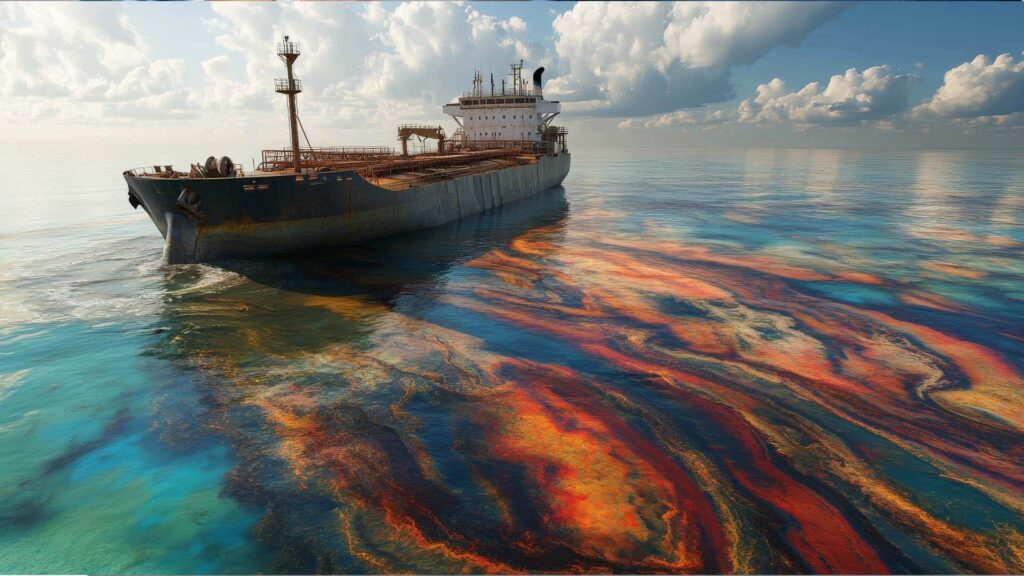
Dredging in industrial harbors, rivers, and legacy pollution sites often involves handling contaminated sediments that contain heavy metals, hydrocarbons, or toxic chemicals. Improper management of these materials can lead to serious environmental and health risks. Experienced dredging contractors take the following precautions:
- Conducting thorough sediment testing before dredging begins
- Using specialized dredging techniques to prevent the spread of contaminants
- Transporting and disposing of hazardous materials in accordance with environmental laws
- Exploring beneficial reuse options, such as capping contaminated sediments or converting them into safe construction materials
Any organization seeking dredging contractors near me for projects involving contaminated sediments should verify that the contractor follows strict handling, transportation, and disposal protocols.
By addressing these environmental concerns, dredging contractors help maintain the balance between essential dredging operations and ecological preservation. They ensure compliance with environmental standards while delivering effective results.
Best Practices for Environmental Compliance in Dredging
To meet strict environmental regulations and minimize ecological impact, dredging contractors must adopt best practices that promote sustainability while ensuring operational efficiency. From using eco-friendly dredging techniques to implementing real-time monitoring, these strategies help reduce pollution, protect marine life, and ensure compliance with regulatory requirements. Companies and municipalities looking for dredging contractors near me should prioritize those who follow these environmentally responsible practices.
Implementing Eco-Friendly Dredging Techniques
Sustainable dredging practices are essential for minimizing disruption to aquatic ecosystems and maintaining water quality. Dredging contractors can implement various eco-friendly techniques, including:
- Precision Dredging – Using advanced GPS and sonar technology to target specific areas, reducing unnecessary sediment disturbance.
- Hydraulic Dredging – A preferred method for fine sediments that minimizes turbidity compared to mechanical dredging.
- Silt Curtains & Containment Barriers – Preventing the spread of disturbed sediment and protecting nearby ecosystems.
- Seasonal Dredging Schedules – Conducting operations outside critical spawning and migration periods to protect marine life.
Selecting a dredging contractor that prioritizes these techniques ensures that projects are completed with minimal environmental impact.
Utilizing Advanced Dredging Equipment to Reduce Environmental Impact
Modern dredging technology allows dredging contractors to perform operations more efficiently while reducing pollution and ecological disturbance. Key advancements include:
- Low-Emission Dredging Equipment – Using electric or hybrid-powered dredgers to reduce carbon footprints.
- Real-Time Dredge Positioning Systems – Ensuring precise dredging to avoid unnecessary sediment removal.
- Automated Cutterhead and Pump Controls – Enhancing efficiency and reducing energy consumption.
- Turbidity Sensors & Water Quality Monitors – Detecting excessive sediment dispersion and ensuring compliance with environmental regulations.
When searching for dredging contractors near me, businesses should consider investing in advanced, environmentally responsible equipment.
Sediment Monitoring and Real-Time Data Collection
Monitoring sediment levels and water quality in real-time is essential for compliance with environmental laws and minimizing the impact of dredging operations. Dredging contractors use various technologies to ensure accurate data collection, including:
- Acoustic Doppler Current Profilers (ADCPs) – Measuring sediment movement and water flow.
- Remote Sensing & Drones – Providing aerial and underwater assessments of dredging sites.
- Real-Time Water Quality Sensors – Tracking turbidity, dissolved oxygen, and pH levels to prevent excessive pollution.
- Automated Reporting Systems – Generating compliance reports for regulatory agencies.
By using these monitoring tools, a dredging contractor can quickly adjust operations to stay within environmental thresholds, reducing the risk of regulatory violations.
Safe Disposal and Beneficial Reuse of Dredged Materials
Properly handling dredged material is critical for minimizing environmental impact and ensuring compliance with disposal regulations. Dredging contractors implement safe disposal and beneficial reuse strategies, such as:
- Sediment Dewatering & Containment – Using geotextile tubes or confined disposal facilities to manage dredged material.
- Beneficial Reuse for Habitat Restoration – Repurposing clean sediment for wetland rehabilitation, beach nourishment, or shoreline protection.
- Land Reclamation & Construction Use – Utilizing dredged materials in infrastructure projects to reduce waste.
- Proper Disposal of Contaminated Sediments – Transporting hazardous materials to designated treatment or disposal sites in compliance with environmental laws.
For organizations seeking dredging contractors near me, verifying that a contractor follows responsible disposal and reuse practices is crucial for meeting sustainability goals and regulatory requirements.
Adopting these best practices, dredging contractors can perform their work more efficiently, minimize their environmental footprint, and ensure long-term compliance with industry regulations.
Choosing Environmentally Responsible Dredging Contractors
Selecting the right dredging contractors is essential for ensuring compliance with environmental regulations while minimizing ecological impact. Whether you’re a municipality, business, or port authority looking for dredging contractors near me, it’s crucial to evaluate a contractor’s environmental track record, certifications, and best practices. Hiring a responsible dredging contractor not only ensures regulatory compliance but also promotes sustainability in dredging operations.
How to Find Dredging Contractors Near Me with a Strong Environmental Record
When searching for dredging contractors near me, consider the following steps to find a company with a proven commitment to environmental responsibility:
- Check Online Reviews and Testimonials – Look for feedback from past clients regarding the contractor’s environmental practices.
- Review Project History – Examine previous dredging projects to see how the contractor managed environmental concerns, such as sediment control and water quality protection.
- Request Environmental Compliance Documentation – Ensure the contractor follows industry best practices and adheres to regulations set by the EPA, U.S. Army Corps of Engineers, and state agencies.
- Look for Sustainable Dredging Techniques—Ask about methods used to minimize environmental impact, such as precision dredging, real-time monitoring, and beneficial reuse of dredged materials.
- Assess Equipment and Technology: Environmentally responsible dredging contractors invest in advanced equipment that reduces emissions and improves efficiency.
Taking these steps will help you find a dredging contractor that prioritizes sustainability while delivering high-quality results.
Certifications and Credentials to Look for in a Dredging Contractor
A reliable and environmentally responsible dredging contractor should hold relevant certifications that demonstrate compliance with industry standards. Some key certifications to look for include:
- U.S. Army Corps of Engineers (USACE) Permit Compliance – Required for dredging in navigable waters.
- EPA National Pollutant Discharge Elimination System (NPDES) Certification – Ensures the contractor follows water pollution control standards.
- ISO 14001 Certification (Environmental Management Systems) – Indicates a commitment to reducing environmental impact through best practices.
- Occupational Safety and Health Administration (OSHA) Compliance – Ensures safe and environmentally responsible work practices.
- State Environmental Permits and Certifications – Many states require additional permits for dredging activities, so verifying these credentials is crucial.
For organizations seeking dredging contractors near me, choosing a contractor with these certifications helps ensure regulatory compliance and environmentally responsible operations.
Questions to Ask When Hiring a Contractor to Ensure Compliance
Before hiring a dredging contractor, it’s important to ask the right questions to determine their commitment to environmental protection and regulatory compliance. Key questions include:
- What environmental regulations do you follow for dredging projects?
- Can you provide documentation of your environmental compliance history?
- What dredging methods do you use to minimize ecological impact?
- How do you monitor water quality and sediment management during projects?
- Do you have experience handling contaminated sediments and hazardous materials safely?
- What measures do you take to reduce air and noise pollution from dredging operations?
- Do you offer beneficial reuse options for dredged materials?
- What certifications and permits does your company hold?
Asking these questions helps identify dredging contractors who prioritize sustainability and compliance, ensuring that your project meets environmental regulations while minimizing ecological disruption.
Technology and Innovation in Sustainable Dredging
Dredging technology advances have significantly improved efficiency while reducing the environmental impact of operations. To ensure compliance with environmental regulations, dredging contractors are adopting cutting-edge innovations such as automation, real-time monitoring, and advanced sediment treatment methods. Whether managing large-scale harbor deepening or small-scale waterway maintenance, selecting a contractor that utilizes the latest technology is essential for sustainable and efficient dredging.
Role of Automation and Real-Time Monitoring in Compliance
Automation and real-time data collection play a crucial role in helping dredging contractors maintain regulatory compliance and minimize ecological disruption. Modern dredging systems integrate automated controls and monitoring solutions to improve precision and efficiency, including:
- GPS-Guided Dredging Systems – Ensure accurate excavation, reducing unnecessary sediment disturbance.
- Real-Time Turbidity Monitoring – Sensors track water quality, allowing contractors to adjust dredging methods to stay within regulatory limits.
- Automated Cutterhead and Pump Controls – Optimize dredging performance while reducing energy consumption and emissions.
- Drones and Remote Sensing – Provide aerial and underwater surveillance for environmental assessments before, during, and after dredging.
For businesses searching for dredging contractors near me, choosing a company that utilizes automation and real-time monitoring ensures that projects meet environmental regulations while maintaining operational efficiency.
Use of Hydraulic vs. Mechanical Dredging for Reduced Environmental Footprint
The type of dredging method used can significantly impact the surrounding environment. Based on site conditions and environmental factors, dredging contractors carefully select between hydraulic and mechanical dredging.
- Hydraulic Dredging – Uses suction to remove sediment and transport it via pipelines, reducing turbidity and preventing sediment resuspension. This method is ideal for fine-grained materials, environmentally sensitive areas, and large-scale dredging projects.
- Mechanical Dredging uses clamshell buckets, excavators, or backhoes to remove sediment physically. This method can lead to higher turbidity levels. However, it is better suited for compacted or contaminated sediments that require precise removal and disposal.
Environmentally responsible dredging contractors assess a project’s specific needs to determine the most sustainable technique, ensuring minimal impact on water quality and aquatic habitats.
Advancements in Sediment Treatment and Disposal Techniques
Innovative sediment treatment and disposal methods help dredging contractors manage dredged materials in an eco-friendly manner while complying with environmental regulations. Key advancements include:
- Geotextile Dewatering Bags – Capture and filter out sediments, allowing clean water to return to the environment while containing solids for safe disposal.
- Beneficial Reuse of Dredged Material – Repurposing clean sediments for beach nourishment, wetland restoration, and land reclamation.
- Sediment Remediation Technologies – Using chemical or biological treatments to neutralize contaminants before disposal.
- Confined Disposal Facilities (CDFs) – Secure storage sites for contaminated sediments, preventing environmental contamination.
When searching for dredging contractors near me, it’s essential to choose a provider that employs advanced sediment treatment and disposal techniques to ensure compliance and sustainability.
By leveraging modern technology, dredging contractors can execute projects more efficiently while reducing environmental impact, making sustainable dredging a reality.
The Future of Environmental Compliance in Dredging
As environmental awareness continues to grow, regulatory agencies are implementing stricter compliance standards for dredging operations. Dredging contractors must stay ahead of these evolving requirements by adopting sustainable dredging practices and innovative technologies. Companies and municipalities looking for dredging contractors near me should prioritize firms that proactively address regulatory changes and embrace eco-friendly solutions to ensure long-term compliance.
Evolving Regulations and Trends Shaping the Dredging Industry
Environmental regulations governing dredging are becoming more stringent as agencies focus on protecting marine habitats, water quality, and coastal resilience. Some of the key trends shaping the industry include:
- Stricter Sediment Management Standards—To prevent contamination, Regulatory bodies are enforcing more rigorous testing and treatment of dredged materials.
- Increased Restrictions on Dredging in Sensitive Areas—Wetlands, estuaries, and coral reefs are receiving heightened protection, which limits dredging activities in ecologically sensitive locations.
- Carbon Footprint Reduction Initiatives—Governments are pushing for lower emissions in industrial operations, prompting dredging contractors to adopt hybrid and electric equipment.
- Digital Compliance Monitoring – Agencies are requiring real-time water quality data and automated reporting to ensure dredging activities remain within environmental limits.
By staying informed about these regulatory changes, a dredging contractor can adapt to new requirements and avoid compliance issues that could lead to project delays or penalties.
Growing Demand for Sustainable Dredging Solutions
As industries and governments prioritize environmental responsibility, there is a rising demand for sustainable dredging methods. Dredging contractors are increasingly expected to implement eco-friendly solutions, such as:
- Eco-Dredging Techniques – Precision dredging, low-impact hydraulic dredging, and real-time sediment monitoring to minimize environmental disruption.
- Beneficial Reuse of Dredged Materials – Repurposing clean sediments for beach restoration, wetland rehabilitation, and land development instead of traditional disposal.
- Green Dredging Equipment – The use of electric-powered or fuel-efficient dredgers to reduce carbon emissions.
- Integrated Dredging and Habitat Restoration – Combining dredging projects with ecological restoration efforts to enhance environmental benefits.
Organizations searching for dredging contractors near me should seek out companies that actively incorporate these sustainable dredging practices into their operations.
How Dredging Contractors Can Stay Ahead of Compliance Requirements
To navigate the evolving regulatory landscape, dredging contractors must take a proactive approach to compliance. Some key strategies include:
- Continuous Training and Certification – Staying updated with industry regulations through training programs and certifications such as ISO 14001 for environmental management.
- Investment in Real-Time Monitoring Technology – Using automation and data analytics to track environmental impact and ensure compliance with water quality standards.
- Collaboration with Environmental Agencies – Working closely with regulatory bodies to understand new requirements and implement best practices.
- Adopting Low-Impact Dredging Techniques – Implementing sediment control measures, sustainable disposal methods, and advanced dredging equipment to minimize ecological impact.
By staying ahead of compliance requirements, dredging contractors can maintain operational efficiency while ensuring environmental responsibility. Companies searching for dredging contractors near me should verify that their chosen contractor is committed to these proactive compliance strategies.
Conclusion
Environmental compliance is a fundamental responsibility of dredging contractors. They ensure that projects are executed sustainably while protecting aquatic ecosystems and meeting regulatory standards. Responsible dredging contractors play a crucial role in minimizing ecological impact, adhering to evolving environmental laws, and implementing advanced dredging technologies. By prioritizing eco-friendly dredging techniques, real-time monitoring, and sustainable sediment management, contractors can maintain compliance while contributing to the long-term health of waterways and coastal environments.
Businesses, municipalities, and organizations searching for dredging contractors near me must select a contractor with a strong environmental record. The future of dredging depends on innovation, regulatory adaptation, and a commitment to sustainability. By choosing a contractor that embraces best practices, holds the necessary certifications, and invests in cutting-edge technology, project owners can ensure compliance while supporting environmentally responsible dredging operations.


